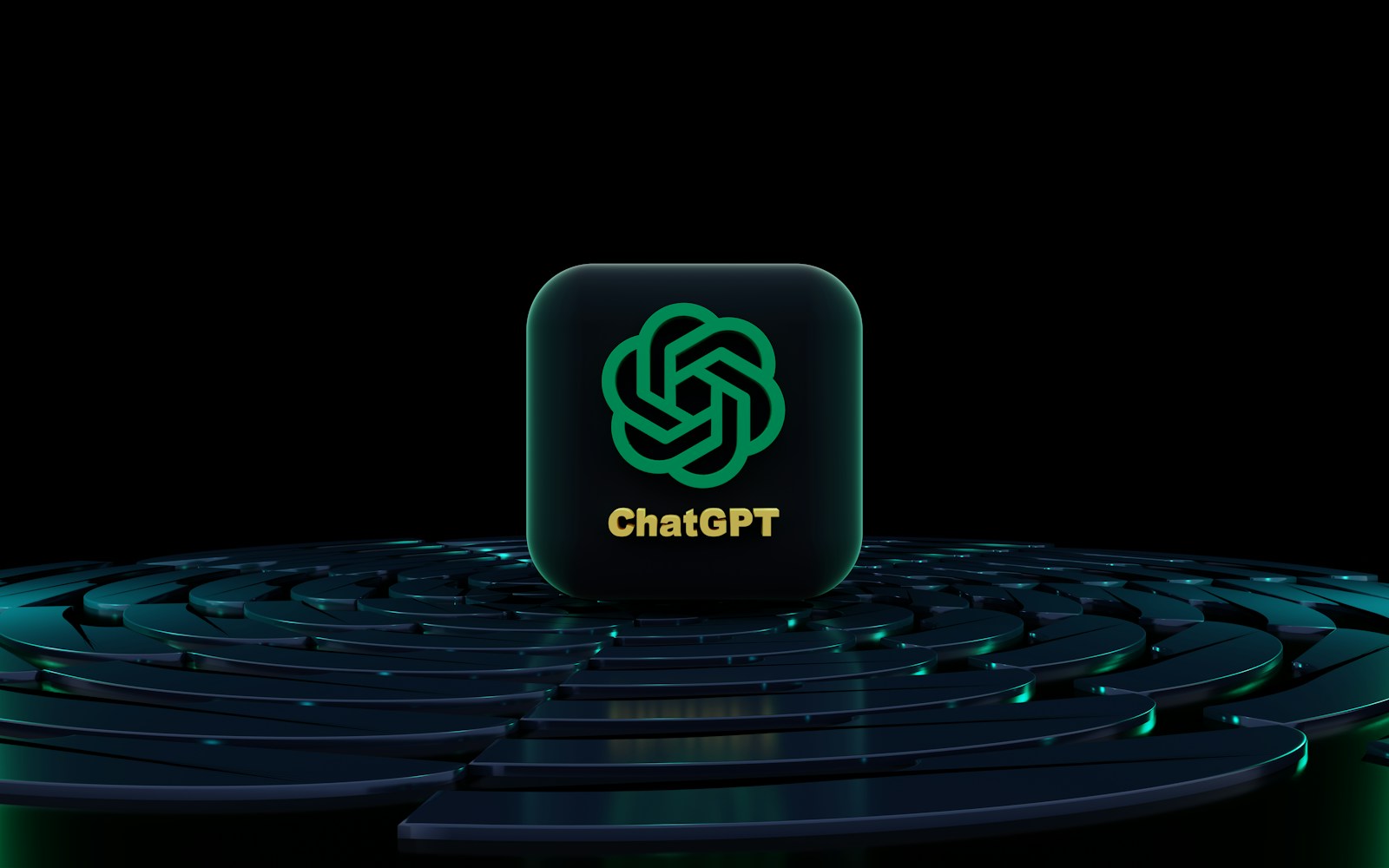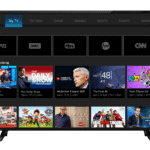OpenAI’s next flagship model, GPT-5, is shaping up to be one of the most anticipated AI releases of the decade. With a targeted release window of late 2025, this upcoming iteration is expected to represent a major leap forward—not just in terms of raw power, but also in how users interact with artificial intelligence. Here’s what we know so far about GPT-5, and why it matters.
GPT-5 Will Unify OpenAI’s AI Ecosystem
Rather than developing a fragmented lineup of specialized models, OpenAI is taking a bold step by consolidating its capabilities into GPT-5. This means that features previously found across different models—such as text generation, image analysis, code assistance, and voice capabilities—are expected to be unified within one AI. This centralization aims to eliminate the need for switching between models like GPT-4o, Whisper, or Codex. The result? A more seamless, streamlined, and efficient user experience that behaves more like a single intelligent assistant.
Coming in Late 2025: What We Know About the Release Window
Though OpenAI has not issued an official launch date, CEO Sam Altman has confirmed that GPT-5 is coming “in months, not weeks.” All signs point to a late 2025 release, aligning with the company’s typical cadence of major upgrades. As OpenAI scales infrastructure through multi-billion dollar partnerships—like its $12B agreement with CoreWeave to secure GPU clusters—the groundwork is being laid for a powerful, cloud-native deployment of GPT-5.
A New Era of Reasoning and Logical Thinking
One of the most exciting promises of GPT-5 is its expected leap in reasoning and cognitive ability. If GPT-4 demonstrated a basic grasp of logic and deduction, GPT-5 aims to push much closer to robust reasoning—handling multi-step tasks, abstract inference, and more complex decision-making with improved accuracy. This could make the model more capable in everything from legal reasoning to scientific analysis.
Multimodal Mastery: Beyond Text
Following the path paved by GPT-4o, GPT-5 is expected to embrace multimodal inputs and outputs. That means it will likely handle not just text, but also images, audio, and potentially even video within a single interaction stream. Imagine asking it to interpret a medical scan, summarize a lecture, or generate a video storyboard—all in one go. This capability will redefine how AI is used in education, design, medicine, and more.
Bigger Memory, Better Conversations
GPT-5 will likely come with a drastically expanded context window—allowing it to retain and reference more of your past conversations, documents, or instructions. This enhanced “memory” makes it possible for users to build long-term projects, conduct multi-day research sessions, or maintain running dialogues without the AI losing track. The implications are huge for both personal productivity and enterprise use.
Backed by Billion-Dollar Infrastructure
To support such an advanced model, OpenAI has partnered with CoreWeave, a GPU cloud computing company, in a deal worth over $12 billion. This investment will provide OpenAI with access to tens of thousands of NVIDIA H100 and upcoming Blackwell chips, ensuring the infrastructure can handle GPT-5’s immense computational demands. It also suggests that GPT-5 will be highly scalable and optimized for enterprise deployment.
Integrated AI Toolkit
GPT-5 isn’t just a language model—it’s set to become a full AI platform. Expect the integration of multiple OpenAI tools into a single model: voice interaction (powered by Whisper), web browsing, file analysis, image understanding, and more. This unification will dramatically expand GPT-5’s utility across creative, technical, and operational use cases.
More Reliable, Less Hallucination
OpenAI has acknowledged past criticism regarding hallucinations—instances where AI fabricates facts or information. With GPT-4.5, there were notable improvements in factual consistency, and GPT-5 is expected to continue this trend. Advances in retrieval-augmented generation (RAG) and built-in fact-checking mechanisms could make GPT-5 one of the most reliable generative models yet.
Game-Changer for Businesses and Developers
GPT-5 will likely drive a new wave of AI adoption across industries. For developers, it could offer more advanced coding suggestions and debugging. In customer service, it might handle complex support tickets with contextual nuance. In marketing, content personalization could reach new levels. Enterprises may find GPT-5 powerful enough to serve as a central AI hub for internal tools and customer-facing apps alike.
Responsible AI Still a Priority
Even with all these upgrades, OpenAI remains focused on responsible development. GPT-5 will likely debut with stronger safety systems, more transparent usage policies, and tools to prevent misuse. From algorithmic fairness to user control, OpenAI is under pressure to ensure GPT-5 doesn’t just set a new bar for performance—it must also set the standard for ethical deployment.
GPT-5 is more than just a sequel—it’s a foundation for the next chapter in general-purpose AI. As OpenAI prepares for its release, users and developers alike should expect not only smarter interactions, but also a far more integrated and immersive AI experience.
Best ChatGPT Prompts for Resume Writing
Looking for a job can be tough. With so many people sending resumes, it’s hard to stand out. Using ChatGPT to improve your resume can help you get more interviews and job offers.
AI tools like ChatGPT can help job seekers write better resumes without hiring expensive writers. These ChatGPT prompts for resumes help highlight your skills and experience in ways that catch employers’ eyes. The right prompts can turn a basic resume into one that shows why you’re perfect for the job.
1. “Tailor my resume summary for a software engineering role”
One of the most useful ChatGPT prompts for resume writing helps software engineers create targeted resume summaries. A good prompt might be: “Create a concise resume summary highlighting my 5 years of Python development, cloud architecture experience, and agile team collaboration skills for a senior software engineer position.”
This prompt works well because it gives ChatGPT specific details about skills and experience. The AI needs this information to create something relevant and personalized.
Software engineering resumes need to showcase both technical skills and soft skills. When using ChatGPT, job seekers should mention programming languages, frameworks, methodologies, and years of experience.
For better results, people should include the name of the company or the exact job title from the posting. This helps the AI generate a summary that matches what employers are looking for.
A modified version of this prompt might look like: “Write a resume summary for a front-end developer with React expertise applying to Amazon. Include my 3 years of experience with responsive design and user-focused development.”
The best summaries are short – usually 3-4 sentences. They give a quick snapshot of the candidate’s value. ChatGPT can help trim unnecessary words while keeping important skills visible.
Engineers should review and edit the AI’s suggestions. Sometimes ChatGPT might use generic phrases that need to be replaced with specific achievements or metrics.
Job seekers can also ask ChatGPT to tailor their summary for different types of companies. A startup might want different qualities than an established corporation.
2. “Highlight leadership skills with metrics”
When writing a resume, showing leadership abilities with real numbers makes a big difference. Ask ChatGPT to help showcase times when you led others and include specific results.
Try this prompt: “Help me describe my experience leading a team of 5 people that increased sales by 30% in six months.” This gives ChatGPT clear details to work with.
Good leadership descriptions always include the team size, what you achieved, and how long it took. Numbers make your claims more believable.
Another useful prompt is: “Transform this basic leadership statement into one with metrics: ‘Managed the marketing team and improved results.'” ChatGPT will add specific numbers that catch employers’ attention.
Remember to include how your leadership helped solve problems. A prompt like “Help me describe how I led my team through a company merger while maintaining 95% staff retention” shows both leadership and results.
Ask ChatGPT to rewrite vague statements. For example, “Rewrite ‘Good at leading teams’ to include specific achievements and numbers.” The AI will create something much stronger.
Leadership metrics can include team size, project budgets, percentage improvements, time saved, or money earned. The more specific, the better.
Try this comprehensive prompt: “Generate three bullet points about my leadership experience managing a customer service team, including metrics about improved satisfaction scores, reduced response times, and team growth.” This gives you options to choose from.
Focus on the impact of your leadership, not just activities. Employers want to see what happened because of your leadership skills.
3. “Optimize resume for remote job applications”
Remote work has unique demands that should be reflected in your resume. Ask ChatGPT to help you highlight skills and experiences that remote employers value most.
Try this prompt: “Rewrite my resume to emphasize remote work capabilities like self-discipline, communication, and tech skills.” This helps showcase your ability to work independently without supervision.
Another useful prompt is: “Add bullet points that demonstrate my experience with remote collaboration tools like Slack, Zoom, and Asana.” Remote employers want to see you’re already comfortable with these platforms.
Time management is crucial for remote work. Ask: “Help me describe my time management and productivity systems that would work well in a remote setting.” This shows you can stay on task without a manager nearby.
Communication skills matter even more when working remotely. Try: “Revise my job descriptions to highlight clear communication abilities and experience collaborating with distributed teams.” Good remote workers can express ideas clearly through writing.
Ask ChatGPT to help showcase your home office setup: “Add a brief section about my home workspace and internet reliability.” This addresses common concerns remote employers have about new hires.
Results matter more than hours worked in remote jobs. Use this prompt: “Convert my job achievements to focus on results and deliverables rather than time spent.” This shows you understand remote work culture.
Location flexibility can be important. Try: “Help me note my availability across multiple time zones” if you’re willing to adjust your schedule for global teams.
Finally, ask ChatGPT to help you spot any red flags: “Review my resume for anything that might concern remote employers and suggest alternatives.” This helps eliminate potential objections before they arise.
4. “Craft action-oriented bullet points for management positions”
Management roles need strong resume bullet points that show leadership and results. Good prompts help ChatGPT create these powerful statements.
Try this prompt: “Create 5 action-oriented bullet points for a [type] manager position that showcase leadership skills, team development, and measurable results.”
Action verbs make bullet points stronger. Ask ChatGPT: “Generate 10 powerful action verbs for managing teams, implementing strategies, and driving business growth.”
Numbers catch employers’ attention. Use this prompt: “Rewrite these management accomplishments with specific metrics: [paste your current bullets].”
Problem-solving is key for managers. Try: “Create bullet points showing how I solved complex business challenges, including the situation, action, and results.”
For budget responsibilities, use: “Write bullet points highlighting my experience managing a $X budget, including cost-saving initiatives and financial outcomes.”
Team leadership deserves focus. Ask: “Generate bullet points showing how I built, trained, and motivated high-performing teams, including specific improvements in team performance.”
Strategic thinking matters too. Try: “Create bullet points demonstrating my contributions to company strategy, including planning, implementation, and business impact.”
Decision-making skills stand out with this prompt: “Write bullet points showcasing my ability to make difficult decisions under pressure, including the approach and positive outcomes.”
For project management experience, use: “Generate bullets highlighting my success managing complex projects, including scope, timeline, budget management, and results.”
Remember to customize the generated bullet points. Add your personal touch and specific achievements to make them authentic.
5. “Revamp resume for a career switch to digital marketing”
Switching to digital marketing requires a resume that highlights transferable skills and shows enthusiasm for the field. A good prompt helps job seekers reframe their experience to match what digital marketing employers want.
Try this prompt: “I want to switch from [current field] to digital marketing. Please help me revise my resume to highlight relevant transferable skills and downplay irrelevant experience. My background includes [list 3-5 key experiences or skills].”
This approach works because it asks the AI to focus on skills that matter for digital marketing roles. Skills like communication, data analysis, and project management often transfer well.
Another effective prompt is: “Review my resume for a digital marketing position. Suggest specific changes to my job descriptions that emphasize skills relevant to SEO, content marketing, and social media campaigns.”
Be specific about the type of digital marketing role you want. Social media management needs different skills than SEO or email marketing.
Include any digital marketing courses, certifications, or personal projects in your prompt. Even small relevant experiences help show your interest in the field.
A good format is: “I completed [course/project] in [specific digital marketing area]. How should I add this to my resume to strengthen my application for digital marketing roles?”
Remember that many skills from other fields apply to digital marketing. Customer service experience shows communication skills. Sales experience demonstrates persuasion abilities. Project management shows organization.
The prompt should ask for help finding the right keywords too. Digital marketing resumes often need to pass through applicant tracking systems before reaching human eyes.
6. “Emphasize project management achievements with data”
Good project managers know that numbers speak volumes on a resume. When you ask ChatGPT to help with your project management achievements, focus on data-driven results.
Try this prompt: “Help me quantify my project management experience by adding metrics and specific data points to these achievements.” This helps transform vague statements into powerful proof of your abilities.
For example, instead of writing “Led a team successfully,” ChatGPT will suggest “Led a team of 12 developers to complete the project 15% under budget and 3 weeks ahead of schedule.”
Numbers create instant credibility. Ask ChatGPT to help you identify the key metrics that matter most in project management. Budget savings, time improvements, and team productivity increases all translate well on resumes.
Another useful prompt is: “Transform these project descriptions into achievement statements with measurable outcomes.” This shifts focus from job duties to actual results.
Remember that percentages, dollar amounts, and time frames all help hiring managers understand your true impact. Even approximate figures are better than none at all.
Try this prompt too: “What are the most impressive project management KPIs I should highlight from this experience?” ChatGPT can help identify which metrics will impress hiring managers most.
When describing complex projects, data helps simplify your story. Numbers provide clear evidence of success that anyone can understand quickly.
Many job seekers forget to mention the size of budgets they managed or teams they led. Ask ChatGPT to help you include these important details that demonstrate your scope of responsibility.
7. “Streamline experience to fit a one-page format”
Fitting your work history onto a single page can be challenging. Many employers prefer one-page resumes, especially for entry to mid-level positions.
Start by removing older jobs that aren’t relevant to your target position. Focus on roles from the past 10-15 years that clearly show your qualifications for the job you want.
Use bullet points instead of paragraphs to describe your experience. This saves space and makes information easier to scan. Limit yourself to 3-5 bullet points per job.
Try this prompt: “Help me condense my work experience at [Company] as a [Position] into 4 bullet points that highlight my most relevant achievements for a [Target Job] position.”
Cut unnecessary words from your bullet points. Remove phrases like “responsible for” and start directly with action verbs. Words like “managed,” “created,” or “increased” get right to the point.
Use numbers and percentages whenever possible. Writing “Increased sales by 27%” takes less space than explaining the full process and gives concrete results.
Consider using a smaller font size for less important information like dates. Just don’t go smaller than 10pt font, as anything smaller becomes hard to read.
Remove redundant information that appears multiple times in your resume. Skills displayed in your work experience don’t need to be repeated in a separate skills section.
8. “Use industry-specific jargon for a finance resume”
Finance employers look for candidates who speak their language. Using the right industry terms shows you understand the field and have the necessary knowledge.
When writing a finance resume, include terms like “financial analysis,” “risk assessment,” and “portfolio management” where relevant. But don’t overdo it—only use terms you truly understand.
For banking positions, mention experience with “liquidity management,” “loan underwriting,” or “regulatory compliance.” Investment roles might need terms like “asset allocation,” “market analysis,” or “valuation models.”
Accounting positions respond well to terms such as “GAAP,” “financial reporting,” or “audit procedures.” Make sure to match the jargon to the specific finance role you’re applying for.
Review the job description carefully for key terms. If they mention “cash flow forecasting” or “budgetary oversight,” include these exact phrases in your resume when describing your experience.
Financial software knowledge matters too. List relevant programs like “Bloomberg Terminal,” “QuickBooks,” or “SAP” that you’ve used professionally.
Quantify your achievements with finance-specific metrics. Phrases like “increased ROI by 15%” or “reduced accounts receivable aging by 20 days” show concrete results.
Fresh graduates can include relevant coursework using proper terminology. Terms like “derivative securities,” “econometrics,” or “corporate valuation” signal your educational foundation.
Remember that different finance sectors use different language. Investment banking, commercial banking, insurance, and corporate finance each have unique vocabularies.
The best prompt for this approach is: “Enhance my finance resume with appropriate industry terminology for a [specific position], ensuring all terms accurately reflect my actual experience and skills.”
9. “Enhance creative roles with a skills matrix”
Creative professionals often need to showcase a wide range of abilities. A skills matrix prompt helps organize these talents in a clear, visual way that catches recruiters’ attention.
Try this prompt: “Create a skills matrix for my resume that highlights my creative abilities in [specific field]. I have experience in [list 3-5 main skills] and want to show how they apply across different projects.”
The skills matrix works especially well for designers, writers, and marketers. It shows both technical skills and soft skills in an organized format that’s easy to scan.
For example, a graphic designer might display proficiency levels in different software alongside creativity, client communication, and project management skills.
When using this prompt, be specific about your industry. A UX designer would highlight different tools than a content creator, even though both work in creative fields.
Add real examples to your matrix. Instead of just listing “Adobe Photoshop – Expert,” mention a specific project where you used advanced Photoshop techniques.
Your matrix can use simple rating systems like stars, percentages, or terms like “Beginner” to “Expert.” Keep it honest – claiming expert status in everything looks suspicious.
The skills matrix works well as a supplement to your work history. It gives hiring managers a quick overview of your abilities without forcing them to hunt through paragraphs.
For creative portfolios, consider making your skills matrix visually interesting. Use colors, icons, or creative layouts that showcase your design sense while remaining professional.
Remember to customize your matrix for each job application. Highlight the skills mentioned in the job description and place them prominently in your matrix.
10. “Refine academic CVs with a focus on publications”
Academic CVs differ from standard resumes. They need to highlight research and publications more than work experience. A good ChatGPT prompt for this purpose should ask for help organizing your publication history effectively.
Try this prompt: “Help me organize my academic publications in my CV to showcase impact factors and citation counts. I work in [your field] with [number] peer-reviewed articles.” This gives ChatGPT enough context to create a properly formatted publications section.
Another useful prompt is: “Suggest ways to categorize my publications into sections like peer-reviewed articles, book chapters, and conference proceedings.” This organizational approach makes your CV easier for hiring committees to scan quickly.
For those with extensive publication lists, try: “Help me select my most relevant publications for a CV focused on [specific academic position].” This helps you highlight work that directly relates to the job you want.
Publication descriptions matter too. Ask ChatGPT: “Write brief impact statements for my key publications that highlight their significance to my field.” These statements can explain why your work matters beyond just listing where it was published.
Citation metrics can strengthen your CV. Use this prompt: “Help me incorporate h-index and other citation metrics into my academic CV appropriately.” This shows the impact of your work in quantifiable terms.
Consider asking: “Create a format for my CV that makes my publication record stand out while maintaining academic professionalism.” The layout can make a big difference in how your achievements are perceived.
For early-career academics, try: “Help me present my limited publication history in the most impressive way for my CV.” ChatGPT can suggest ways to showcase potential even with fewer publications.
Visual organization matters. Ask: “Suggest formatting for my publications section that improves readability while highlighting my contributions as first or corresponding author.” This helps emphasize your most significant work.
Don’t forget digital identifiers. Try: “Help me incorporate my ORCID ID and ResearchGate profile into my academic CV.” These connections can help reviewers find and verify your work easily.
What are some effective ChatGPT prompts for tailoring a resume to a specific job description?
The key to a successful application is customizing your resume for each position. Ask ChatGPT to analyze job descriptions with prompts like: “Identify key skills and requirements from this job posting and suggest how to incorporate them into my resume.”
Another useful prompt is: “Compare my current resume with this job description and suggest modifications to better align my qualifications with what the employer is seeking.”
These approaches help you create targeted resumes that speak directly to hiring managers’ needs.
Can ChatGPT help me with creating a cover letter that complements my resume?
Yes! ChatGPT excels at creating complementary cover letters. Start with: “Based on my resume and this job description, draft a cover letter that highlights my most relevant experiences.”
For a more personal touch, try: “Write a cover letter that explains why I’m passionate about joining [company name] as a [position], incorporating these three key achievements from my resume.”
This helps create consistent application materials that tell a cohesive story about your professional journey.
Are there any free ChatGPT templates available specifically for resume writing?
While ChatGPT doesn’t offer pre-made templates, you can create custom templates by asking for structured formats. Try: “Create a resume template for a [your industry] professional with sections for skills, experience, and education.”
You can also ask: “Suggest a modern resume format for a [your role] position that will stand out to recruiters but still pass ATS systems.”
These prompts help you generate customizable frameworks that you can adapt to your specific needs.
How do I ask ChatGPT to rephrase my current resume content for better impact?
To strengthen your existing content, use specific prompts focused on action verbs and achievements. Try: “Rewrite this job description using powerful action verbs and quantifiable achievements: [paste your current bullet point].”
For your professional summary, use: “Create three versions of a professional summary that highlights my experience in [industry] and expertise in [key skills].”
These approaches help transform generic descriptions into compelling achievement statements that grab attention.
What are the best ChatGPT plugins or tools for assisting with resume creation?
While basic ChatGPT is powerful for resume writing, several plugins enhance its capabilities. The WebPilot plugin helps research industry standards for resumes in your field.
Link Reader can analyze job postings directly from URLs to provide targeted advice. Zapier integration allows you to connect ChatGPT with resume builders and formatting tools.
These tools complement ChatGPT’s writing abilities with additional functionality for optimizing your resume creation process.







